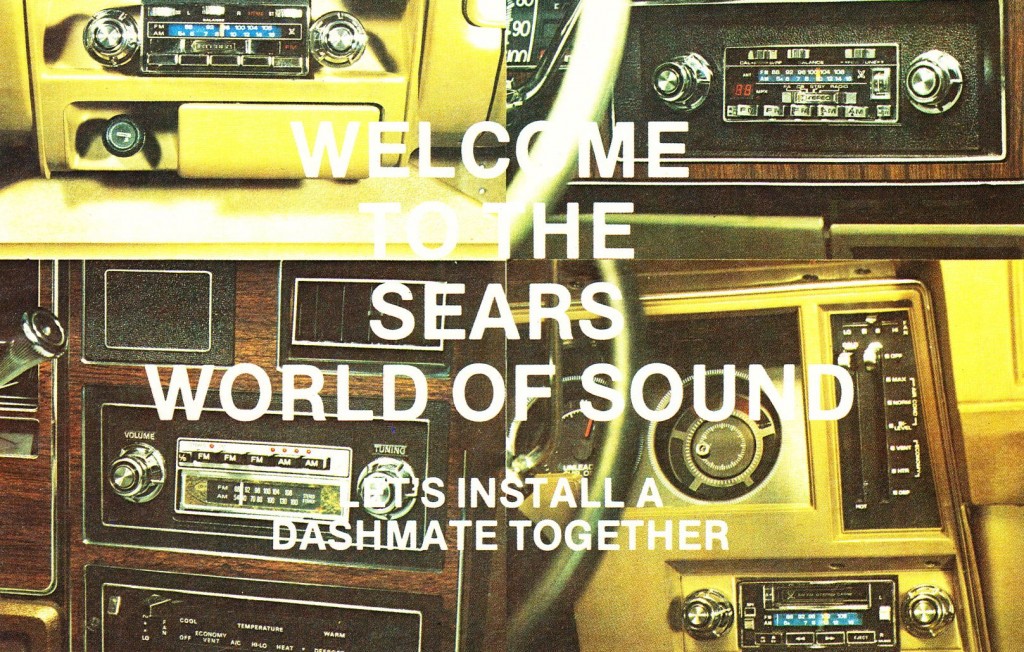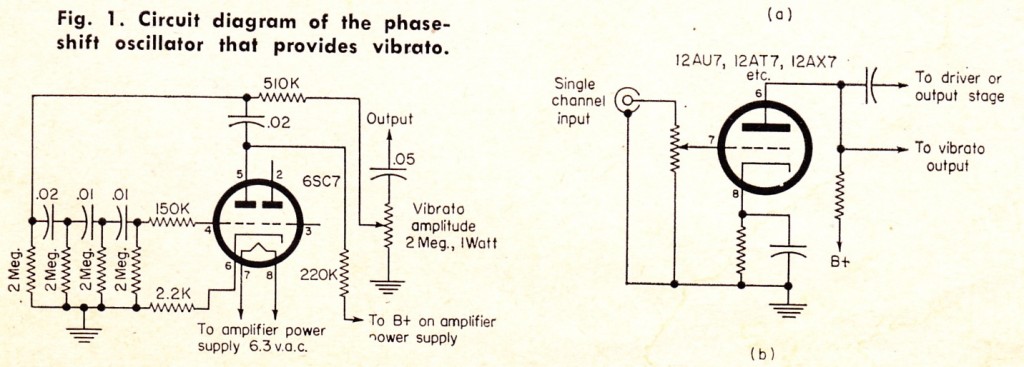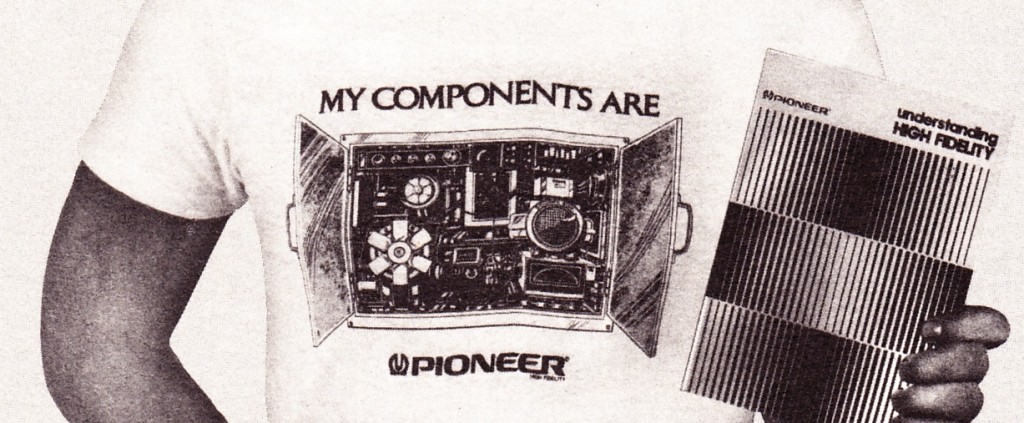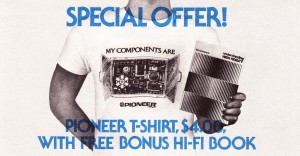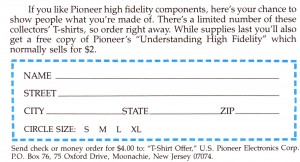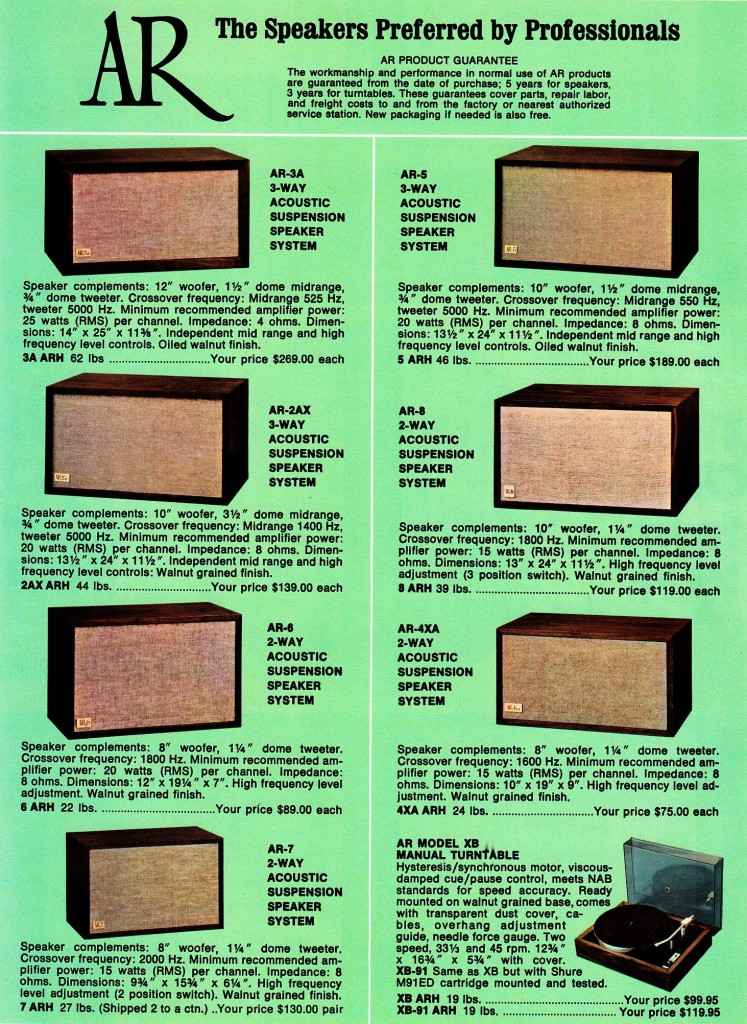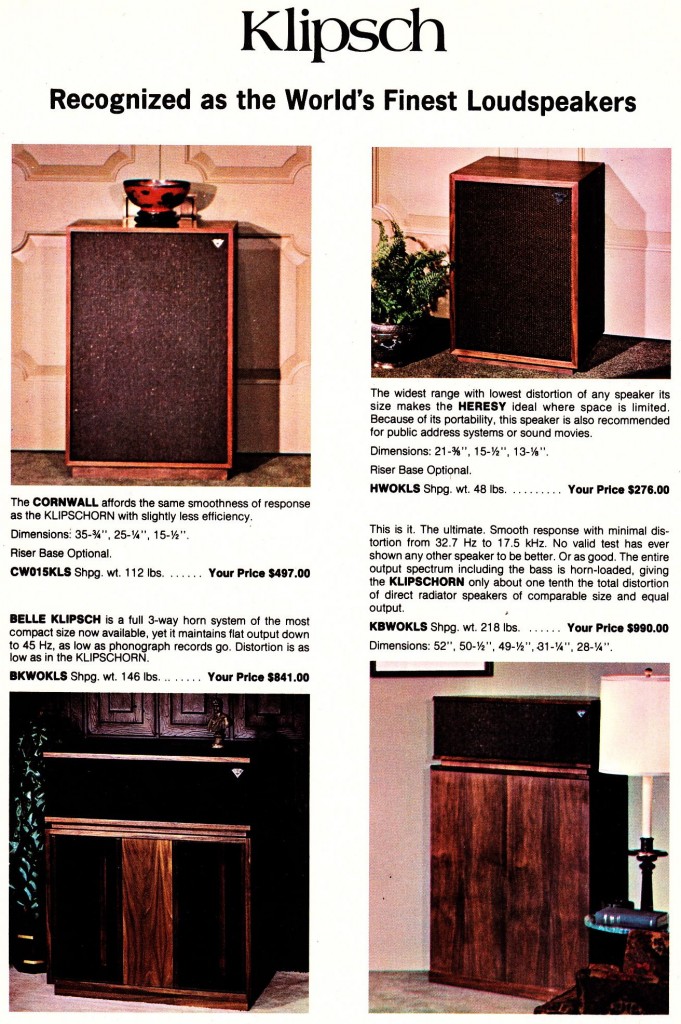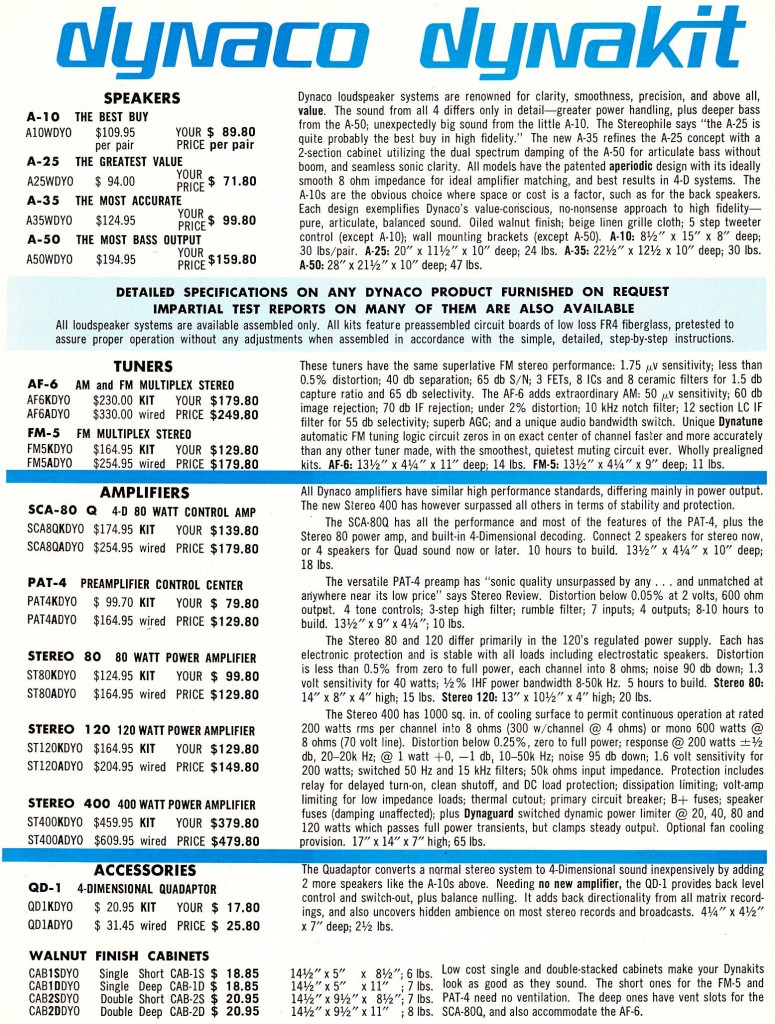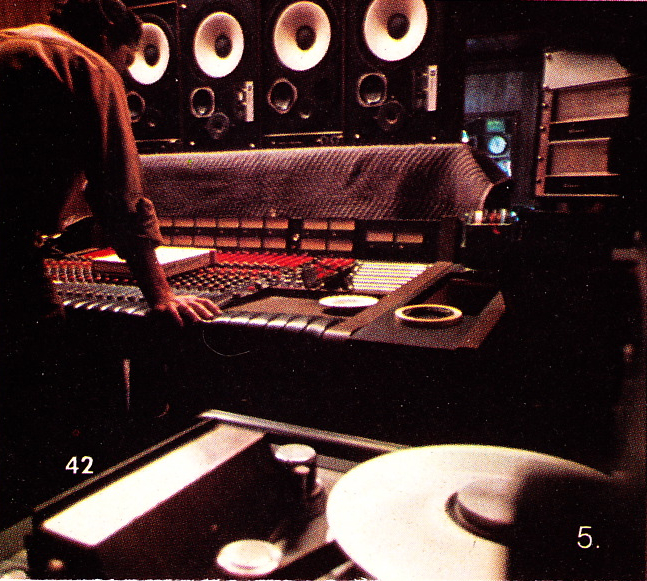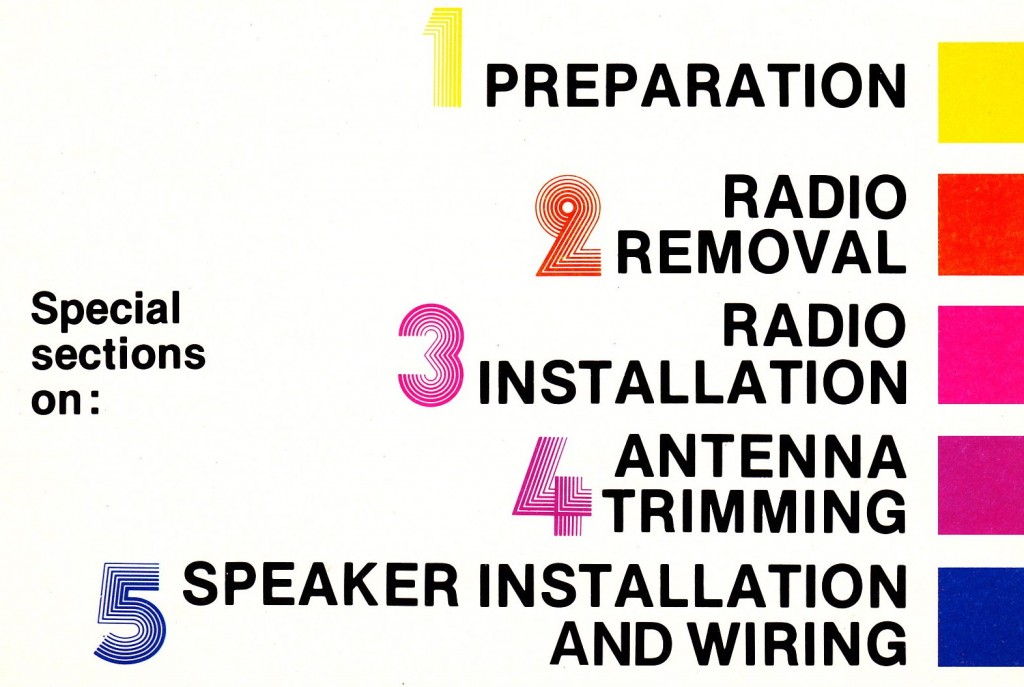
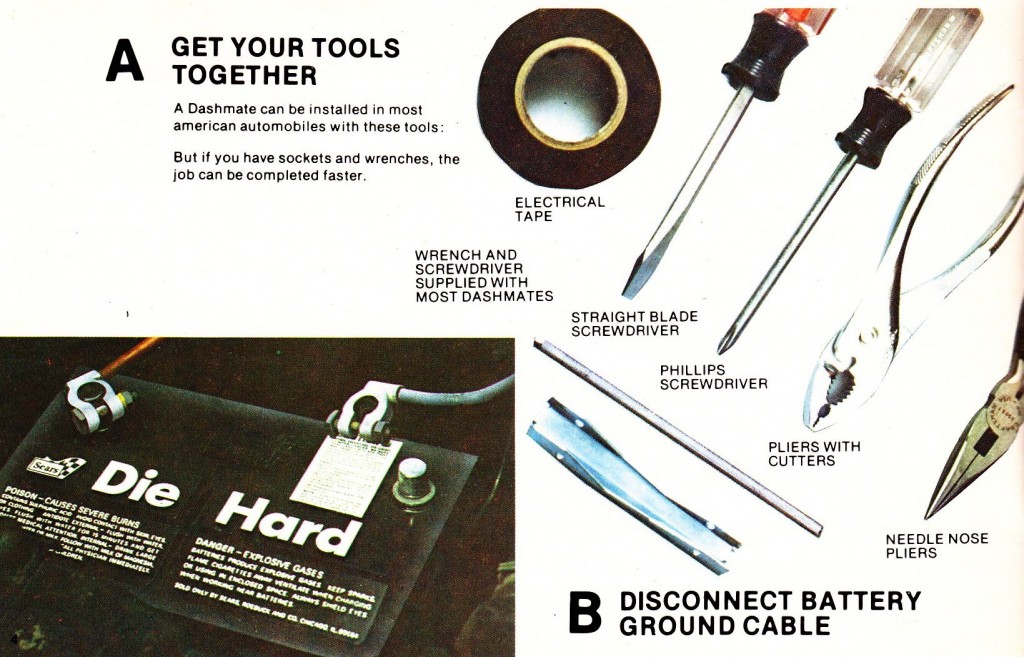
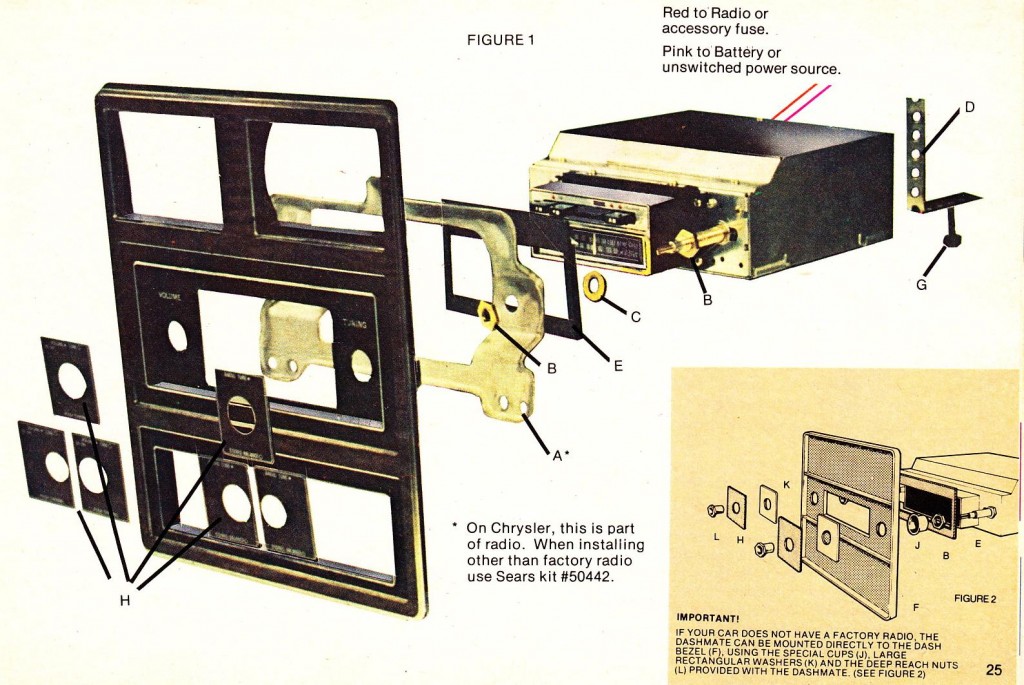
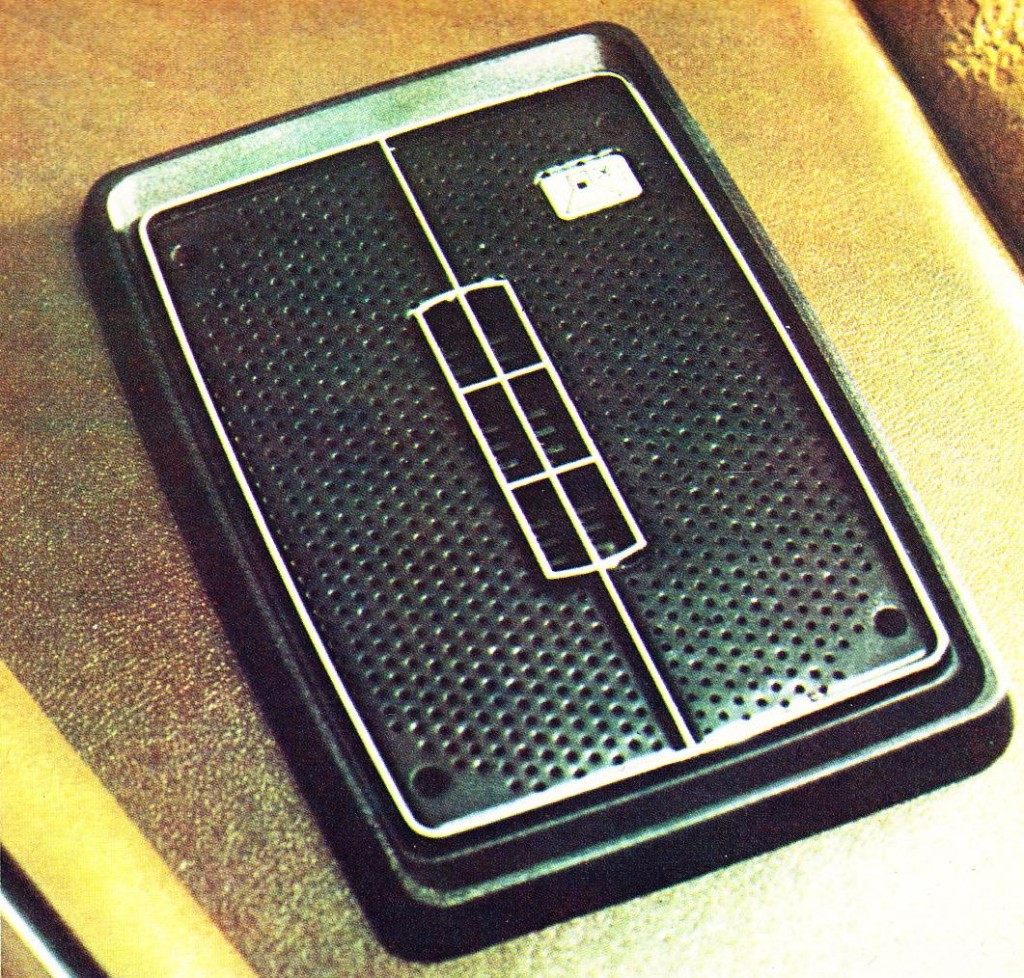 I think they left out Phase Six: smoke grass. Jesus my car stereo really started fukkin up y’day. The CD player (which is an enormous, inscrutable six-disc changer built into the dashboard) started spewing out nothing but insane digital hash. E. suggested that perhaps some force was trying to direct me to the New Sound. Before I could get a recorder to sample it, all returned to normal. S’pose it’s just a matter of time before the doorway opens again. And then: The New Sound.
I think they left out Phase Six: smoke grass. Jesus my car stereo really started fukkin up y’day. The CD player (which is an enormous, inscrutable six-disc changer built into the dashboard) started spewing out nothing but insane digital hash. E. suggested that perhaps some force was trying to direct me to the New Sound. Before I could get a recorder to sample it, all returned to normal. S’pose it’s just a matter of time before the doorway opens again. And then: The New Sound.
Author: chris
Add Vibrato (?) To Any Tube Amp! (1962)
 Download a short article from 1962 by one F.H. Calvert on the subject of adding a vibrato circuit to any vacuum-tube audio amplifier:
Download a short article from 1962 by one F.H. Calvert on the subject of adding a vibrato circuit to any vacuum-tube audio amplifier:
DOWNLOAD: Vibrato
Above, the schematics. These are not plans for a stand-alone device: rather this circuit (the schem on the left) is intended to be added to any resistance-coupled voltage amplification stage (for instance, the circuit on the right). It requires an extra single hi-mu triode section. The author suggests 1/2 a 6SC7 or 1/2 a 6SL7, but it would presumably work just as well with 1/2 a 12AY7 or 1/2 a 12AT7, with maybe just a slight change to the 2.2K cathode bias resistor (can anyone tell me what the single-triode sub-miniature equivalent of the 12AY7 and the 12AT7 are? Do they even exist?) I have not built this circuit yet so no promises. A few observations tho: I find it hard to believe that this is actually a vibrato device; it seems like it’s likely a tremolo circuit. It looks very similar, in fact, to the trem circuit in the ole 18watt Marshall combo. Also: if it’s worth building, it’s certainly worth adding the speed variation pot. Contrary to what the author suggests, my best guess would be to replace the left-most 2M resistor with a 2M pot PLUS a fixed 470K resistor in series. Def gonna try adding this to the next Recycled Champ that I turn out.
Best Shirt
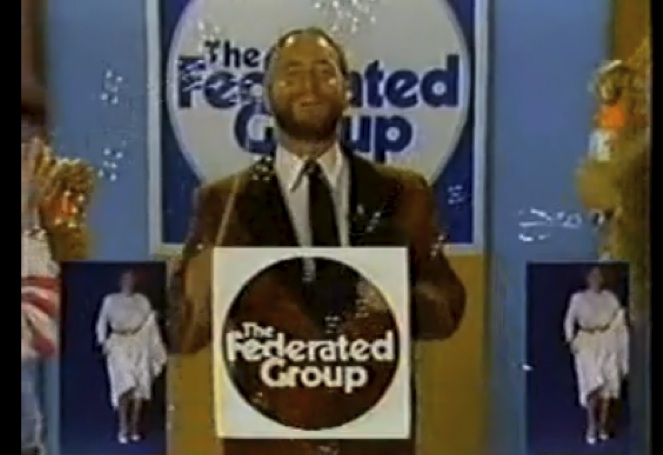 If you’ve been reading this website for a while, you’ll know that I post a lot of old print adverts and catalogs featuring 1920’s – 1980’s audio equipment. I collect this sort of paper and I have 1000s of pieces of this stuff that I am slowly bringing online for y’all.
If you’ve been reading this website for a while, you’ll know that I post a lot of old print adverts and catalogs featuring 1920’s – 1980’s audio equipment. I collect this sort of paper and I have 1000s of pieces of this stuff that I am slowly bringing online for y’all.
Larger consumer electronics chains also produced adverts for cable and local television broadcast. Most of them were negligible affairs driven solely by budget concerns, but every field will have its mavericks. My good friend GJ turned me on to the collected television advertising of the Federated chain of stores. GJ: “…the Federated spots…were done by Shadoe Stevens when he was a young unknown playing a guy named Fred. They were small time/ cheap and weird and made a little shop really popular. Developed a cult following…some are amazing and inspiring.” No small praise coming from GJ, a fine director himself. You can watch his latest production, a music video for the fantastic group Peaking Lights, at this link.
I won’t offer any analysis or commentary on the Federated spots, as one could quite literally write a book about this series of spots: there is that much going on as far as the highly intertextual and media-aware nature of these little narratives, the smart visual language, and the savvy use of minimal production bucks to create memorable advertising that really does relate well to actual consumer-benefit of the products offered. So get ready for a journey through time and space:
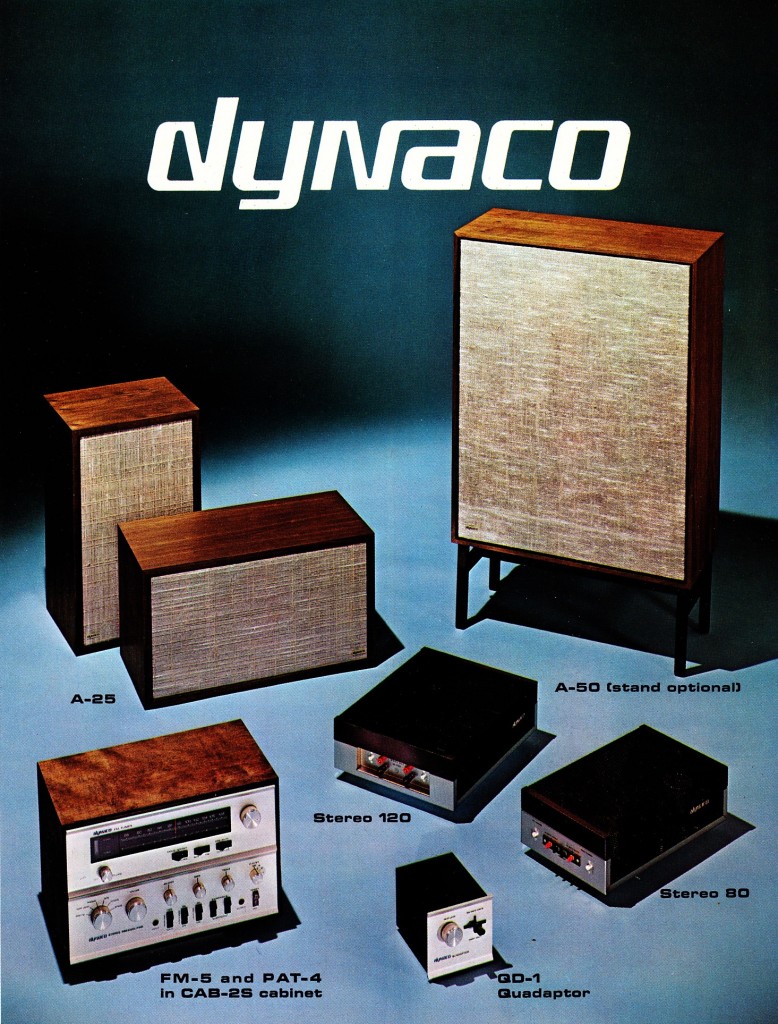
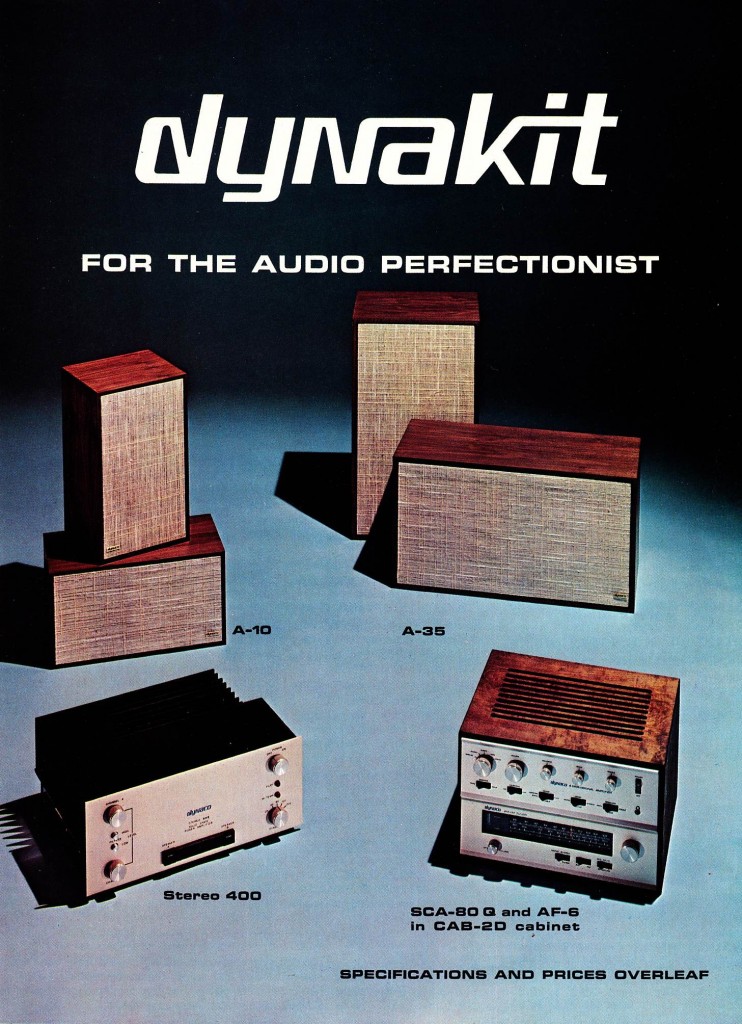 Above, the Dynaco line-up circa 1974: A10, A-25, A-35, and A-50 speaker systems; Stereo 120, Stereo 50, and Stereo 400 amps, PAT-4 Preamp, FM-5 and AF-6 tuners, SCA-80Q integrated amp. Dynaco components were offered pre-assembled (and badged as Dynaco), and in kit form (badged Dynakit). The speakers, AFAIK, were all pre- assembled. Dynaco had an earlier line of tube components that are more sought-after, but you can find plenty of all types out there… the speakers are not as common but apparently not-too-bad.
Above, the Dynaco line-up circa 1974: A10, A-25, A-35, and A-50 speaker systems; Stereo 120, Stereo 50, and Stereo 400 amps, PAT-4 Preamp, FM-5 and AF-6 tuners, SCA-80Q integrated amp. Dynaco components were offered pre-assembled (and badged as Dynaco), and in kit form (badged Dynakit). The speakers, AFAIK, were all pre- assembled. Dynaco had an earlier line of tube components that are more sought-after, but you can find plenty of all types out there… the speakers are not as common but apparently not-too-bad.
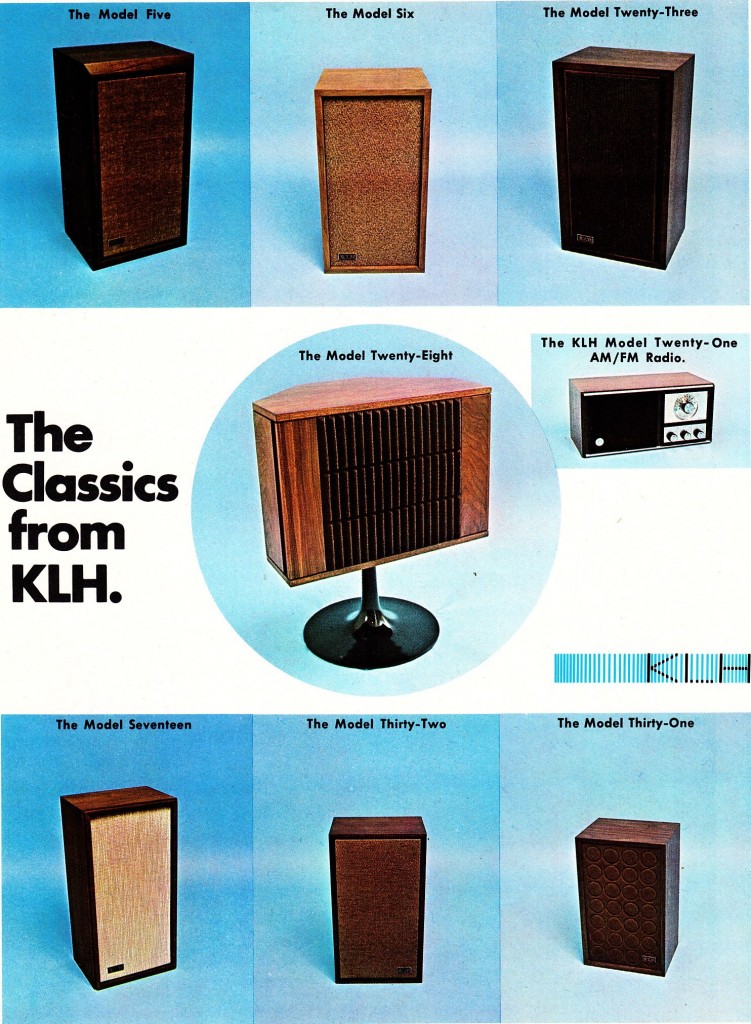 Today: part two of our series on the higher-end of widely available vintage hifi speakers: KLH. Despite their very generic, un-hip look, these KLH units really surprise me with their sound. IMHO they sound a lot better and a lot more modern than the JBLs of the same period. Plus they have woven clothe surrounds so they are a lot less likely to need any servicing. I have personally encountered some units that had bad crossover caps, so if you get a pair and there’s no tweeter action… it might be the cap. I recommend this brand of cap for replacement. Good price/performance value. Some of these KLH models were also available (with a different numerical designation) as part of a 3-peice-set including an amp/tuner/phono combo unit.
Today: part two of our series on the higher-end of widely available vintage hifi speakers: KLH. Despite their very generic, un-hip look, these KLH units really surprise me with their sound. IMHO they sound a lot better and a lot more modern than the JBLs of the same period. Plus they have woven clothe surrounds so they are a lot less likely to need any servicing. I have personally encountered some units that had bad crossover caps, so if you get a pair and there’s no tweeter action… it might be the cap. I recommend this brand of cap for replacement. Good price/performance value. Some of these KLH models were also available (with a different numerical designation) as part of a 3-peice-set including an amp/tuner/phono combo unit.
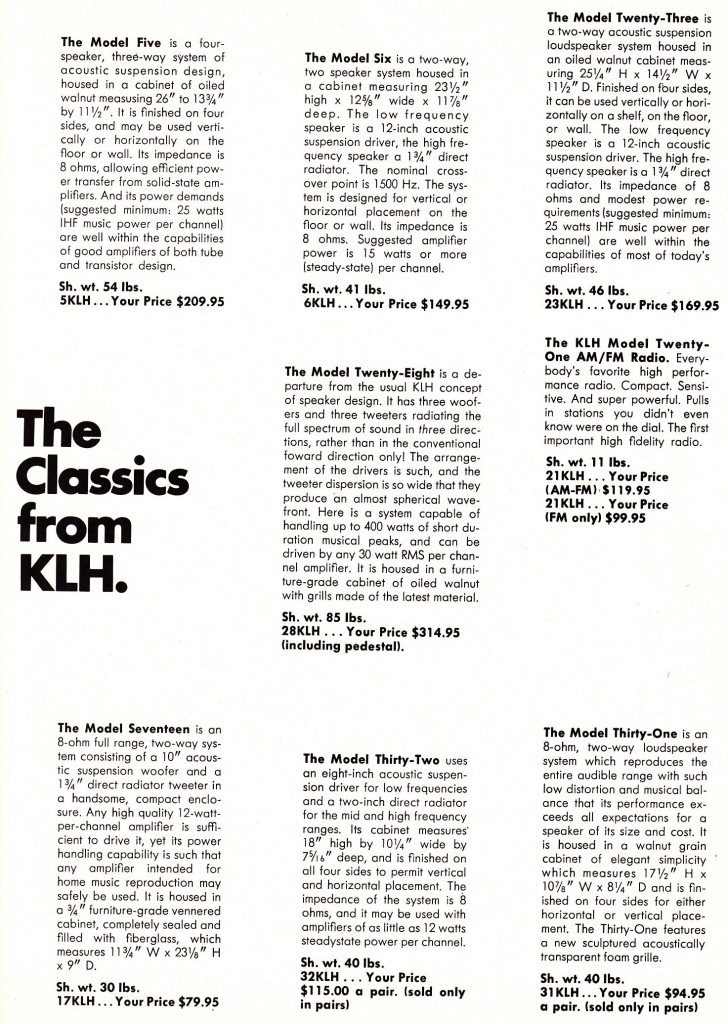 Above: KLH Model Five, Six, Twenty-Three, Twenty-Eight, Twenty-One, Seventeen, Thirty-Two, and Thirty-One.
Above: KLH Model Five, Six, Twenty-Three, Twenty-Eight, Twenty-One, Seventeen, Thirty-Two, and Thirty-One.
JBLs ‘in-the-studio.’ Seriously tho you wouldn’t want to use these in an actual recording studio these days, trust me I’ve tried.
This week at PS dot com… a collection of the better-sort of home hifi speakers that can turn up for $10 – $30 at yard sales in the local posh suburb. Aside from some of the larger ‘marquee’ models, I think i’ve come across pretty much all of these at one point or another… And remember, don’t be afraid of disintegrated foam surrounds on old woofers… a $40 re-foam kit from Orange County Speaker and about 2 hours of your time is all it takes to bring most of these things back. Scared me the first time too, but shit now I get to watch TV with a $1700 pair of Dahlquists that cost me all of $35.
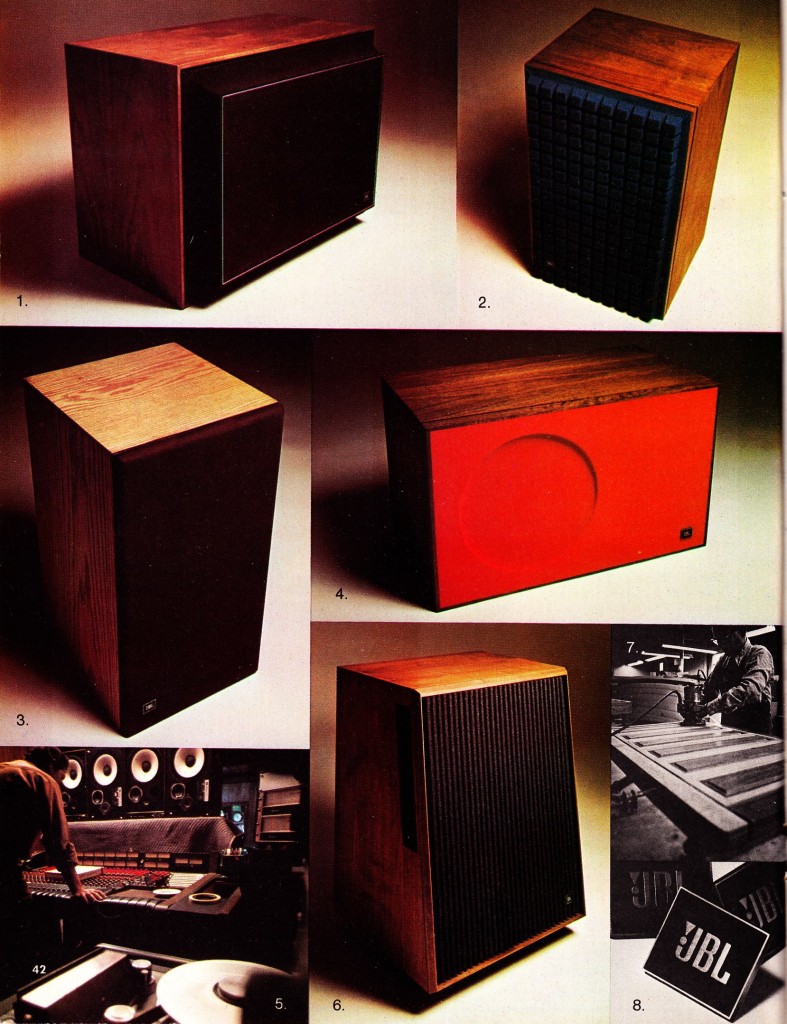
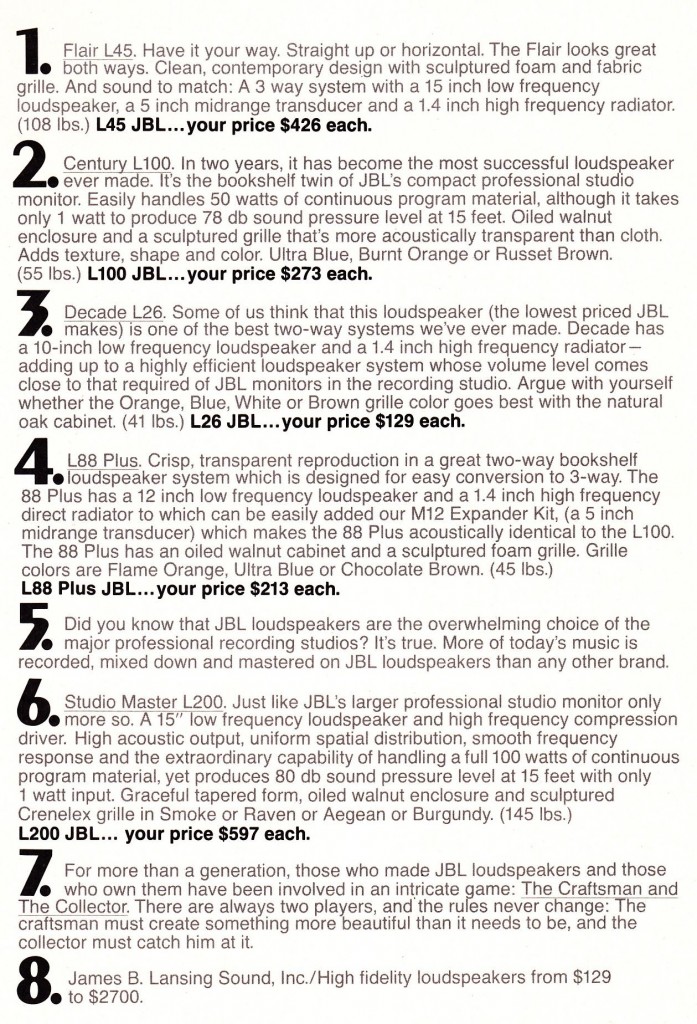 Above, JBL Flair L45, Century L100, Decade L26, L88 Plus, Studio Master L200.
Above, JBL Flair L45, Century L100, Decade L26, L88 Plus, Studio Master L200.
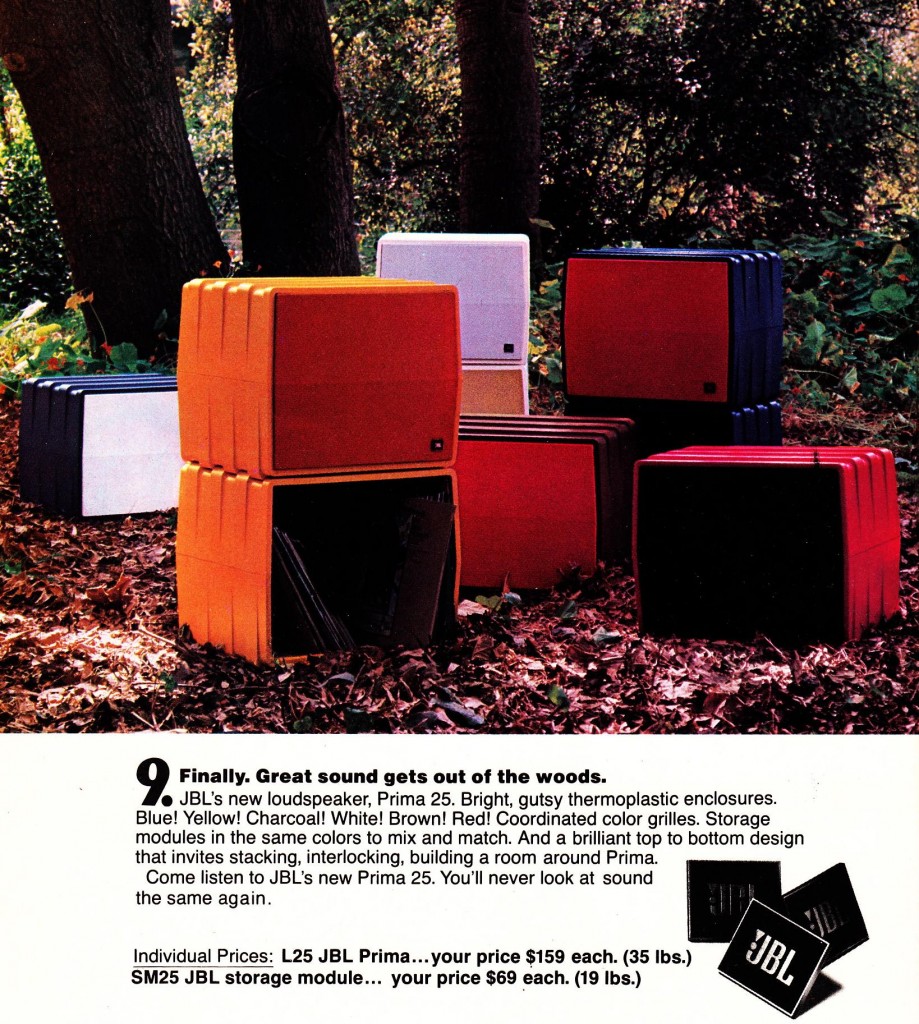 And last but not least… The L25 Prima! JBL’s plastic-cased speakers circa 1974. With optional coordinated record-bins. This one’s for you MT. You still got these things?
And last but not least… The L25 Prima! JBL’s plastic-cased speakers circa 1974. With optional coordinated record-bins. This one’s for you MT. You still got these things?
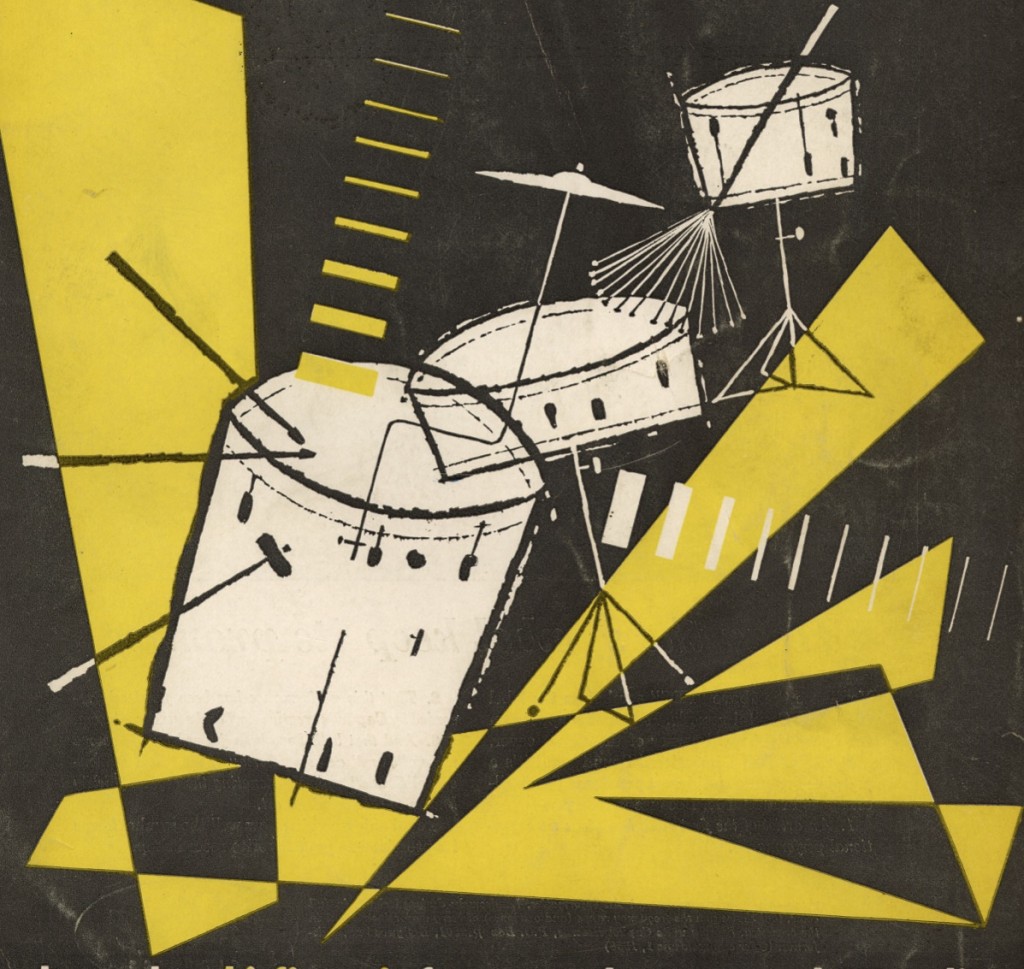 Download a four-page article from “High Fidelity Music at Home” (yes this was the title of an ancient magazine…) circa 1958 on the subject of Oh How Things Have Changed (in Jazz recording):
Download a four-page article from “High Fidelity Music at Home” (yes this was the title of an ancient magazine…) circa 1958 on the subject of Oh How Things Have Changed (in Jazz recording):
DOWNLOAD: HFMAH-5804-Jass_Band
Yeah yeah sure DAWs have changed music, MP3, etc., etc… but how about electricity? I recently started reading a couple of books from Mainspring Press on the subject of “Recording the Twenties” and “Recording the Thirties.” It’s a little tough for me to get through owing to the fact that I have no interest in the vast majority of music that the author discusses, but shit if I am going to sit here and harp on and on about audio history, maybe I should have some of the facts straight? NEways… some interesting stuff for sure. I bought an old spring-powered Victrola for a few bucks at an auction last week and ran some 78s on it… it sure didn’t sound great but music came out. Music made and recorded without the benefit of microphones, speakers, wires, or electricity. Crazy right?
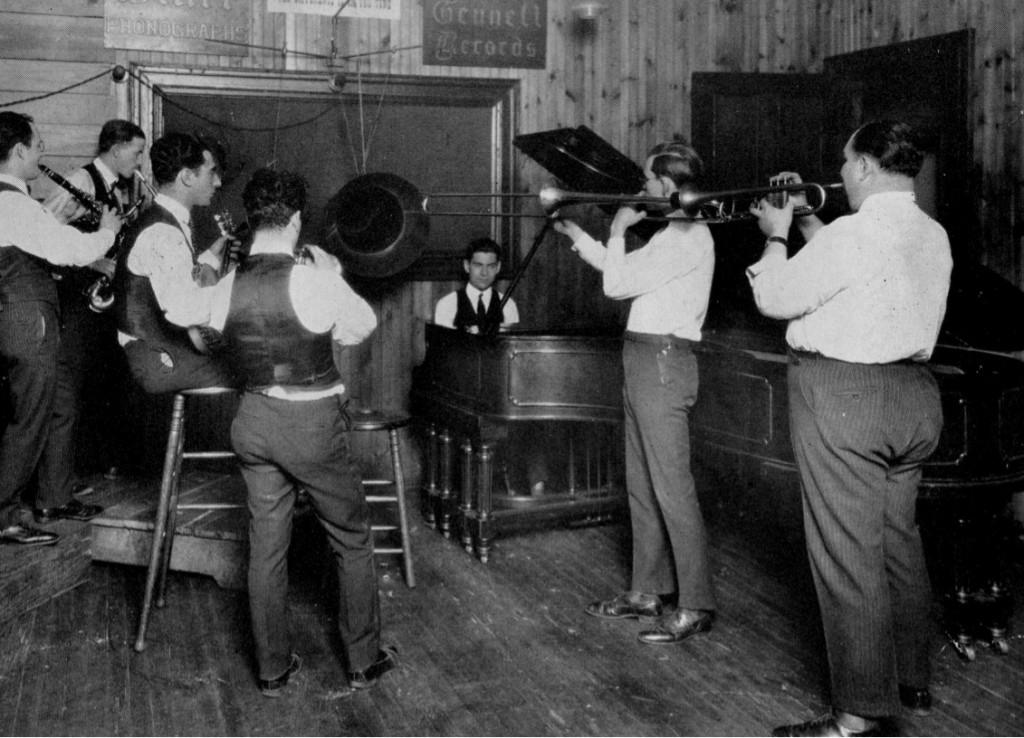 A “Jass” session for Gennet Records circa 1923. All of the sound happening in that room vibrates a small metal diaphragm located somewhere down in the bowels of that wall-mounted horn; this diaphragm is mechanically coupled to a needle that cuts a varying groove into a spinning disc. A record is made.
A “Jass” session for Gennet Records circa 1923. All of the sound happening in that room vibrates a small metal diaphragm located somewhere down in the bowels of that wall-mounted horn; this diaphragm is mechanically coupled to a needle that cuts a varying groove into a spinning disc. A record is made.
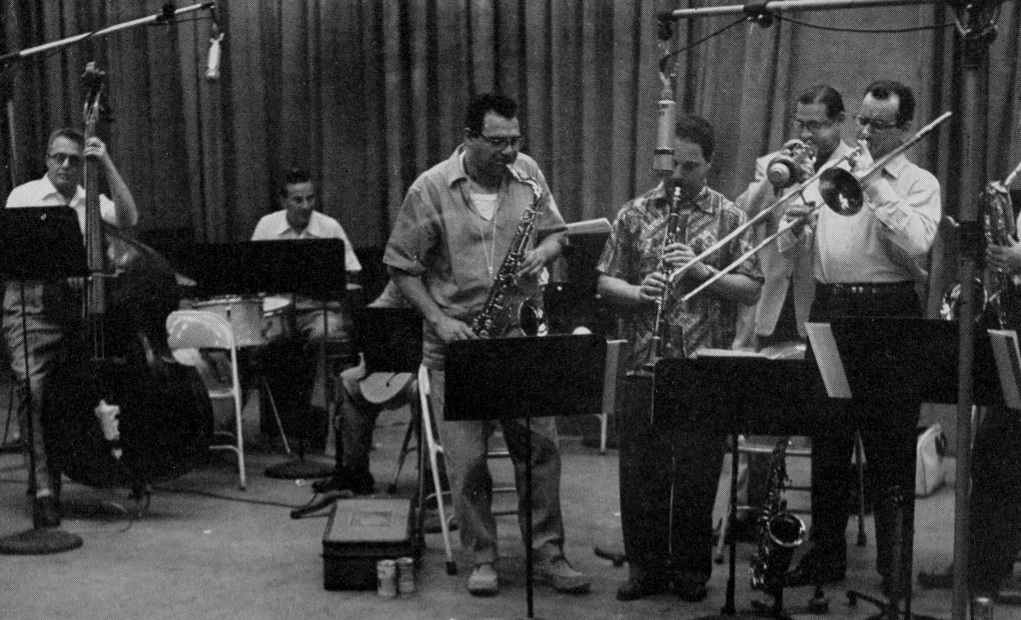 A Jazz session circa 1958. The sounds happening in that room vibrate thin polyester diaphragms inside all of those microphones; a particular instrument’s proximity to a particular ‘mic’ determines to what degree that ‘mic’ will pick up that instrument rather than the others. Electrical signals flow from each mic to an audio-mixing panel where the various signals can be combined or rejected to the taste of those with appropriate authority in the mixing-room. Eventually, a record is made.
A Jazz session circa 1958. The sounds happening in that room vibrate thin polyester diaphragms inside all of those microphones; a particular instrument’s proximity to a particular ‘mic’ determines to what degree that ‘mic’ will pick up that instrument rather than the others. Electrical signals flow from each mic to an audio-mixing panel where the various signals can be combined or rejected to the taste of those with appropriate authority in the mixing-room. Eventually, a record is made.
The only thing that we can count on as music-production professionals is change. Market forces drive change. The tastes and talents of the young, both music consumers and makers, drive change. Just get the job done and make the music feel powerful. Shit, I plugged my iphone into the HD3 system today to provide a quick synthesis source for a vocoder part and I’m not ashamed. The MS20 was just too far across the studio for me to bother with. As the author of the above-posted essay correctly states: “While we must encourage engineers to improve recording and reproducing equipment… the great enjoyment of music comes from understanding its aesthetic beauty, rather than concern with the techniques by which music is produced.”
Magnetic Film Recording (1953)
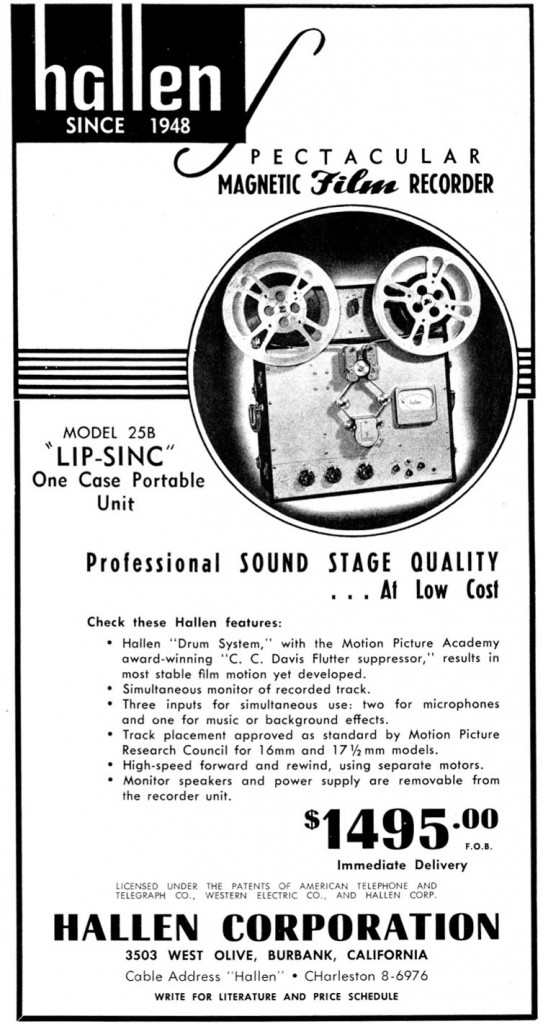 The Hallen Corp magnetic film-recorder circa 1953. A bargain at $13,000! (adjusted for inflation)
The Hallen Corp magnetic film-recorder circa 1953. A bargain at $13,000! (adjusted for inflation)
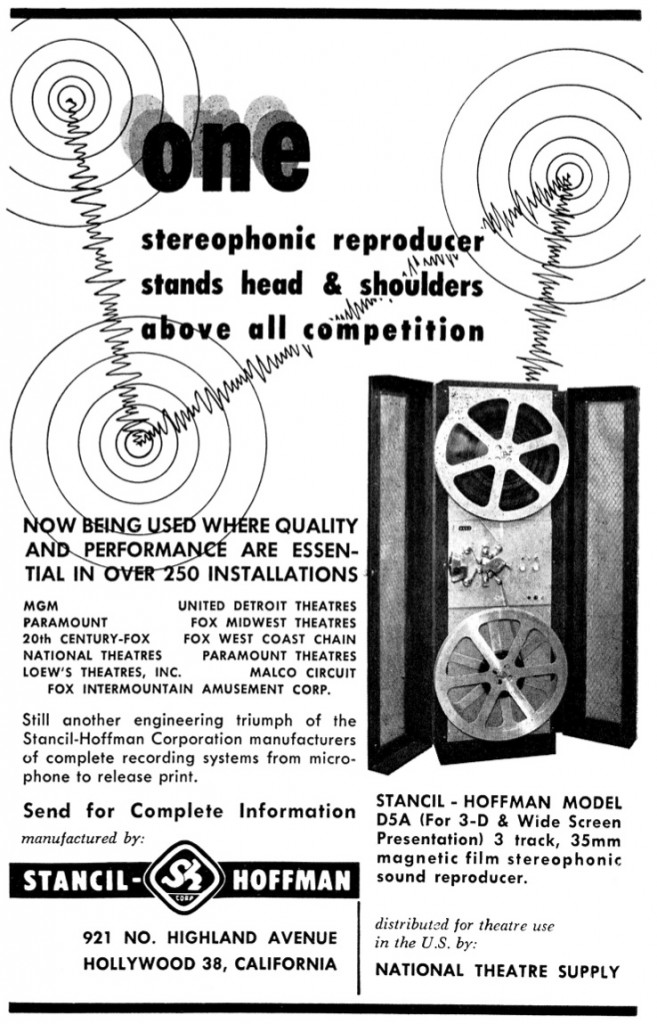 The Stancil-Hoffman magnetic-film recorder circa 1953.
The Stancil-Hoffman magnetic-film recorder circa 1953.
Everyone (that reads this website…) is aware that magnetic wire recording gave way to magnetic tape recording, which gave way to magnetic discs, which are currently being slowly phased-out in favor of motionless ‘solid-state’ memory (via i-am-typing-this-on-maybe-my-last-macbook-that-will-have-a-spinning-harddrive). Progress is rarely purely sequential though, and just as there was the short-lived metal-tape recorder of the 1930s (see this previous post for info), the Ampex/Magnecord dominated early magnetic-tape era was challenged (for fidelity, at least) by magnetic film recorders. Aside from their heavy endorsement from Fine Recording, I don’t know much about these machines. Are any still in use? What made them superior to magnetic tape, and why? Let us know…
